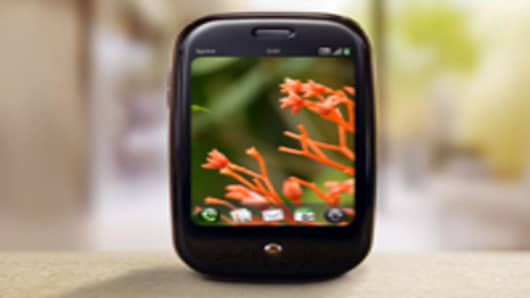The Pre ($150 with a two-year contract, after rebate) is a compact capsule, with the same pleasing polish as, say, a worry stone; a keyboard slides out with the push of a pinky.
The Pixi ($100, same terms) is a slab-style phone, impossibly thin (0.4 inch), with the keyboard parked below the screen. The Pixi is not quite the masterpiece the Pre is: the camera isn’t as powerful, the screen is shorter by 80 precious pixels and the processor is much pokier. But at least the Pixi Plus adds Wi-Fi for getting online at wireless hot spots.
Both phones feature Palm’s Web OS software, a fine, fluid operating system that, in many aspects, out-iPhones the iPhone. Among other pluses, the software multitasks, so you can put on Pandora radio as you process your e-mail. These are multitouch phones, too, meaning that two-finger gestures (like pinching to shrink a photo or Web page) work perfectly.
The most famous feature of the Web OS, however, is its ability to collate multiple calendars, address books and e-mail accounts. For example, it can show the appointments from your Google Calendar, Yahoo calendar, Outlook calendar and Facebook events on a single, color-coded screen.
Also part of the package: Wi-Fi, Bluetooth, flash for the camera, removable battery, physical Ringer Off switch — the works.
Really, there were only three potential pitfalls for the original Palm Pre and Palm Pixi: the exclusive provider, Sprint; the paltry supply of apps in the Palm app store; and the disappointing battery, which sometimes died by dinnertime.
With the Plus versions, Palm is trying to put a pair of those problems out to pasture. Verizon is the new parent of the Pre and Pixi.
Now, you’ll pay for this privilege; as an example, Sprint charges $100 a month for unlimited talking, texting and Internet use; Verizon, $120. And Verizon, as a company, is not, ahem, known for cozying up to its customers. But we may as well admit Verizon has a knockout network. It just doesn’t drop calls nearly as often as certain other carriers.
The app store is improving, too. Palm’s new application process speeds up approvals of new programs. It has also offered programmers a way to convert their previous apps (for other computers) into a Pre/Pixi format without having to rewrite them from scratch. Today, the store stocks 1,000 programs — far fewer than Google’s 20,000 or Apple’s 120,000, but the apps are high quality, the store itself is easy to use, and the rate of increase is picking up (100 a week, Palm says).
All right: and now for the Plus part. Are you prepared for this?
With one tap, the Palm Pre Plus or Pixi Plus turns into a portable, pocket hot spot.
That’s right. No more prowling around for a coffee shop or airport lounge to check your e-mail. No more fumbling with some $60-a-month U.S.B. thing to get your laptop online. Suddenly, your body is at the center of a 150-foot Wi-Fi hot spot, wherever you go.
You and five friends can be online simultaneously, with laptops, netbooks, iPod Touches, Wi-Fi cameras and game consoles. Long car rides will never be the same.
Oh, there have been similar features before. A few phones offer something called tethering, where you connect one laptop to a cellphone, either with a U.S.B. cable or wireless Bluetooth — but that’s slowish, it’s one laptop at a time, and it’s much trickier to set up.
If you’re technically savvy, you can hack an iPhone or another smartphone to offer something like Palm’s mobile hot spot feature, illegally. And the Novatel MiFi, a credit card-size portable Wi-Fi hot spot, performs the same miracle, but it’s another gadget to charge and carry around.
But to have a phone serve as your personal Wi-Fi hot spot? The logic is overwhelming, and the execution is practically perfect.
You download a free app. You open it, name your hot spot, make up a password if you want one, and tap On.
Now nearby neighbors suddenly see the hot spot, and (if they provide the password) can surf it at 3G speeds, just fast enough to watch videos without skipping. Each time someone connects, a note on the Palm’s screen to let you know — a nice touch.
This is a breakthrough. It does, however, come with a price: $40 a month, on top of whatever you’re paying for voice, texting and regular Internet. (That’s for 5 gigabytes of data a month; more costs extra.)
Some people will proclaim that price to be preposterous; after all, you’re already paying for Internet service. Why should it cost $40 more to share it?
Other people will call it a good deal; after all, a U.S.B. cellular modem or the MiFi would cost you $60 a month.



